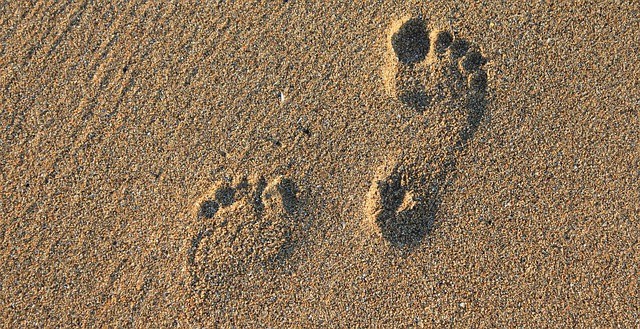
Evidence of ice age children leaving their footprints while playing in megafauna puddles fossilizing about 11,000 years later in White Sands National Park in New Mexico.
The connection between people and massive Pleistocene creatures, such as the enormous ground sloth tracks discovered by scientists, was peculiar.
Signs of Ancient Play
Four children were following the tracks in a dried-up riverbed; it would have been difficult for these prehistoric children to avoid following in the footsteps of enormous creatures, reported Live Science.
These prints came from the Pleistocene in North America from 2.6 million to 11,700 years ago. Children compared it to a prehistoric playground, according to Matthew Bennett from UK Bournemouth University, who researches environmental and geographical sciences.
He has visited the White Sands more than a dozen times in the last five years to find and analyze ice age human and enormous Pleistocene animal footprints.
They have found several specimens, including ice age people from 21,000 and 23,000 years ago; proof that the Americas have been home to humans for many millennia, noted A-News.
Study to be Proven Yet
Bennett intends to publish a methodology paper on the discovery of the children's and sloth's muddy prints in the upcoming months to assist researchers in examining comparable trackways in determining how many people were present and how old those individuals were when they formed the tracks.
He discovered more than 30 footprints in megafauna puddles, most likely left by Ice Age children between the ages of 5 and 8, crisscrossing the sloth trackway, according to Bennett.
The now extinct giant ground sloth, presumably Nothrotheriops, traversed the area on all fours before leaving its trackway. According to Bennet, every sloth print is two basic prints combined.
He added that the rear paw follows and falls on it as it puts its forepaws downwards. The kidney-shaped prints result from the front and back paws working together, noted True Viral News.
He added that this giant animal had a footprint of about 16 inches long and would be as huge as a modern bovine or a huge bear.
The shallowness of the prints is about 1.2 inches deep, though the children were intrigued enough to follow the plodding beast prints in the ground, filled with water.
Claiming that this enormous animal would have been as large as a current cow or a large bear and had a footprint that was around 16 inches long.
The footprints are just about 1.2 inches deep, but the kids were curious enough to follow the earth's trudging, wet beast tracks.Children made many tracks from that period, and like today's children, they romp about.
Children would have been alongside adults as part of a foraging group during the ice age, and they might have followed a huge sloth across a lakebed.
The giant footprints would have been entertaining distractions for a child while a parent was out hunting. Due to the unclear stratigraphy and lack of organic materials, it is challenging to radiocarbon date fossilized prints.
Although the dates of 23,000 and 11,000 years would be more clearly defined with the discovery of ancient prints and the knowledge that ground sloths went extinct. Finding the footprints of ice age children in megafauna puddles and tracks left evidence of animal-human interaction in this epoch, the Pleistocene.
© 2025 HNGN, All rights reserved. Do not reproduce without permission.








